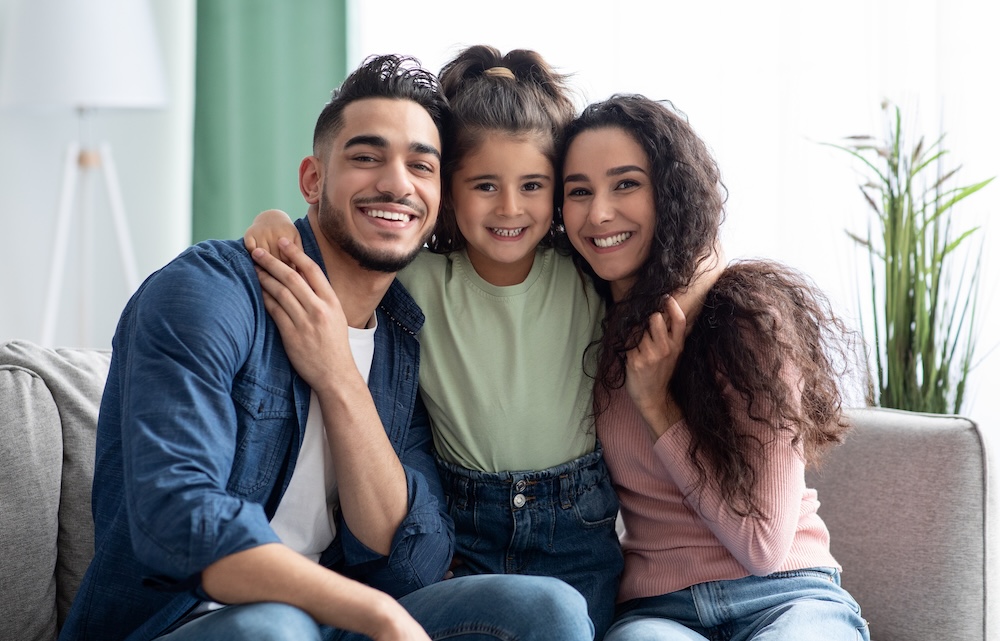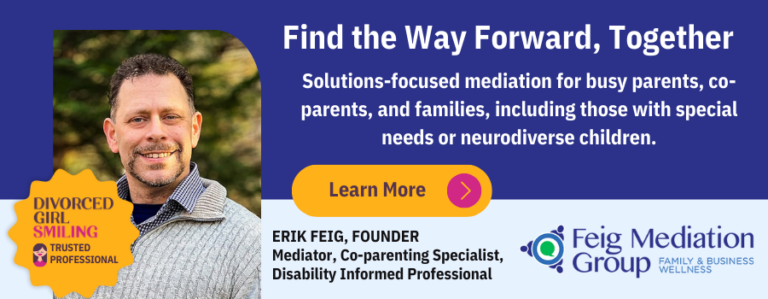One of the first things I often hear from parents getting divorced is: “I’m worried about the kids. I don’t want them to be affected by this.” And yet, despite the best intentions, children often end up feeling like they’re in the middle of their parents’ divorce. Why? Because parents don’t have the co-parenting tools needed.
The truth is, kids are highly attuned. They pick up on every look, tone of voice, sigh, and sarcastic remark—even when you think they’re too young to notice. They hear the language you use with and about each other, and they absorb the tension in the room. Divorce is painful, and when anger, grief, or exhaustion takes over, it’s easy to lose sight of how much children are observing and internalizing.
The good news: even if you’ve made “mis-steps” (and every parent does), it’s never too late to change how you show up for your kids. At the end of the day, being conscious and intentional about how you’re going to talk about each other during and after the divorce can have an enormous impact on keeping your children from feeling caught in the middle of what’s going on between you, the parents.
Common Ways Parents Unintentionally Put Kids in the Middle
Subtle choices in language and behavior can have a lasting impact on how kids experience – and remember – divorce. Some examples:
- Word choice matters. Saying “You’re going to your dad’s house” communicates division and resentment. Making a small change by instead saying “You’re going to Dad’s house” — a more neutral formulation — lessens the parent divide. Better yet: “You get to spend time with Dad this weekend.” Turning it into something positive sets a very different tone.
- Using Legal terms at home. Words like “custody” and “visitation” may be necessary in court, but they dehumanize children in daily life. Kids aren’t property to be “had” or “visited.” Instead, try “Mom’s time” or “Dad’s time.”
- Facial expressions and body language. An eye roll, a sarcastic tone, or an exasperated sigh communicates volumes—even without words. Children feel the tension and may interpret it as disapproval of the other parent.
- Oversharing or venting. Telling kids details of the divorce, or painting one parent as “the bad guy,” forces them into impossible loyalty conflicts. Remember: kids already sense far more than you realize. You don’t need to spell it out.
Why Language and Tone Matter
Children will not remember every detail of your divorce battle. What they will remember is how they felt during it: Did they feel safe? Did they feel caught in the middle? Did they feel loved by both parents?
Every word you choose and every expression you show can either reinforce or undermine that sense of security – and the effects accumulate over time. Taking a more conscious approach that supports each parent’s role can have a profound impact on giving children the chance they deserve at growing up feeling more grounded, healthy, and secure.
The Role of Mediation in Healthy Co-Parenting
One of the reasons I am so passionate about mediation is that it’s not just a legal process—it’s a co-parenting workshop in disguise.
In litigation, the focus is on winning: who gets more, who “proves” their case, who walks away with a judgment. Once the lawyers go home, however, you’re still left as co-parents. Unfortunately, the court process doesn’t teach you how to collaborate—it often teaches you how to fight better.
Mediation, on the other hand, is forward-looking. It’s about building solutions and ways of doing things that everyone can live with. It’s about practicing communication, negotiation, and problem-solving skills that you’ll continue to use for years as co-parents.
When parents craft their own agreements—whether about finances, parenting time, or communication—they’re more invested in them. Compliance is higher, post-divorce litigation is less likely, and the co-parenting relationship has a chance to realign to a healthier trajectory.
Co-parenting tools to Keep Kids Out of the Middle
- Shift from spouses to co-parents. The marriage may be over, but the parenting partnership lasts forever. Think of your relationship as a business partnership focused solely on your children’s well-being.
- Adopt a “businesslike” communication style. You don’t have to be friends to be effective co-parents. Treat communication as professional: clear, respectful, and focused on logistics and what needs to be done, rather than emotions.
- Be intentional with language. Replace trigger words like “always” and “never” with neutral descriptions. Frame time with the other parent as something positive your child gets to do.
- Create alternative outlets for your emotions. Therapy, coaching, or a trusted support system can give you a space to process anger, grief, or betrayal—without unloading them on your children.
- Keep your eyes on the future. Mediation is about building the path forward. Ask yourself: What do I want my children to remember 5 or 10 years from now about how I handled this divorce? That question alone can shift your perspective.
Divorce is one of life’s most challenging transitions, and no parent navigates it perfectly. What matters is your willingness to learn, to adjust, and to put your children’s emotional health at the center of your decisions.
Your kids don’t need a perfect parent—they need parents who are committed to keeping them out of the conflict. If you can give them that gift, you’re setting them up for resilience, trust, and healthier relationships of their own in the future.
Like this article? Check out “Tips to a Divorce Strategy Where Everyone Wins”





















